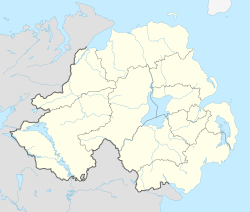| Clogherbog | |
|---|---|
Location within Northern Ireland | |
| Irish grid reference | H4151 |
| District | |
| County | |
| Country | Northern Ireland |
| Sovereign state | United Kingdom |
| Postcode district | BT |
| Dialling code | 028, +44 28 |
| UK Parliament | |
| NI Assembly | |
Clogherbog is a townland in County Fermanagh, Northern Ireland. It is part of the civil parish of Boho, and contains the sub-townlands of Carrickrory, Lough Nacloyduff, Loughanquin, Loughnamanfin and Tullylaur. [1] It is situated within Fermanagh and Omagh district.
The area is notable for the discovered remnants of ancient civilisations, including an Iron Age wooden cauldron [2] and the lettered cave at Lough Nacloyduff (the lake of the dark caverns), which contains primitive inscriptions. [1] The origins of this cave have been speculated on since a visit in 1850 by archaeologist William Wakeman, who subsequently presented his findings to the Royal Irish Academy. [3] [4]
Other features include a Mass rock which is inscribed with the date of 1777 and the Lake of the Fair Woman (Irish : Loch na mban fionn) which is the subject of an old tale. [1]
